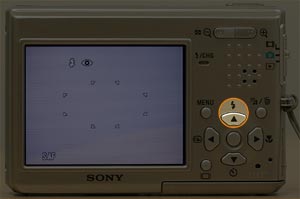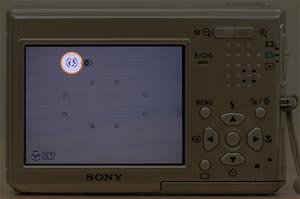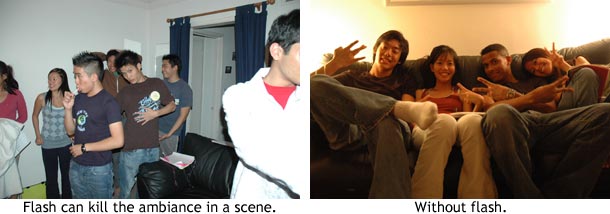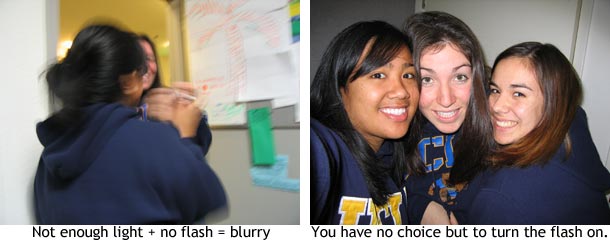|
||
|
How to Turn On/Off Your Flash For most cameras, the flash button is designated with a lightning bolt. A lot of compact cameras have it on the directional pad. If you can't find it, refer to your camera's manual.   If you press the flash button, you may get a menu or your camera may cycle through the flash modes. Use Your Flash Around Noontime At first, this may seem somewhat counter-intuitive. There's enough light all around you, especially when the sun is way up there in the sky, so why in the world would you need to use your flash? Well, the simple answer is that the light is right above your subject so that tends to make an unflattering picture full of shadows over his or her face. The simple solution is to turn on your flash and put it in fill flash or backlighting mode (check your camera manual). If your camera doesn't have a fill flash mode, then just turn on the flash and it should automatically give you the right amount of flash power. This will lower the contrast of the subject so that it is within the range of the sensor by "filling in" the harsh and ugly shadows with the light from the flash. The following picture was taken with the flash on; without the flash it would have created extremely harsh shadows all over her face.  Summary: Use fill flash around noontime to avoid harsh shadows. Turn Off Flash Indoors (Sometimes) Most consumer digital cameras are designed to merely get the shot when it comes to dim indoor lighting, but most of the time a direct flash looks harsh and unflattering. Sometimes you want to capture the ambiance of the scene and the only way you can do that is to turn off the flash.  I do have one word of caution, though. If there is not enough light in the scene, you will get a blurry picture. There are several techniques on how to counter that in the section on how to hold your camera steady, but there are times when there just isn't enough light and you will not get a sharp picture. For those times, you should use a flash. Play around with using or not using your flash and train your eye to see when to use the flash and when you can turn it off.  Summary: If you have enough light, turn of flash indoors. If not, keep it on. Experience will dictate if you can turn it off or not. |
||
Back to Main Digital camera help, tips on digital cameras, and camera techniques. Canon Powershot camera help and Nikon digital camera tips. Canon SLR and Canon camera tutorials. Nikon SLR, Panasonic, Casio, and Pentax digital camera technique. All content on these pages are Copyright 2007-2011 Yu Jiang Tham. No content from this website may be used or duplicated without express permission from the owner. Please email support@facethelight.com for more information. FaceTheLight.com is part of The Happywalrus Network - Get Free Stuff and Make Money! |